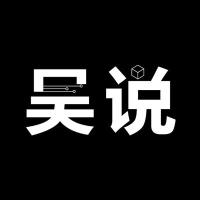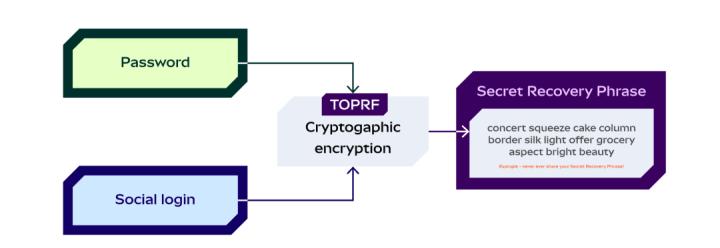
The operation difficulty of the cryptocurrency market has entered hell mode. The market is volatile, with large fluctuations, and in the face of Trump's every move, all technical analysis and future market forecasts seem powerless.
From the perspective of retail investors, the excessive and rapid fluctuations have greatly increased the risk of contract trading, the long-awaited altcoin season has turned the so-called value investment into a joke, and the entry of various bulls and bears has led to the "killing" in the meme market... In such a high-difficulty new market environment, the traditional bull market operation strategies have been proven ineffective. To succeed in the hell mode, one needs to find a rational path in the volatility, and seek more certain operation opportunities while protecting assets.
Based on historical experience, the trough period of the market (without arguing whether it is a bull or bear market, but the current situation is obviously in the trough of collective sentiment) is often the window for low-position layout and implementation of stable strategies. The focus at this stage is to seek more stable and low-risk operations. Currently, major exchanges have provided a series of financial services such as single-currency yield, fixed investment, etc. Flexibly using these services in major exchanges can help investors implement their expected strategies more efficiently, and reap the rewards when the market improves.
Next, we will take Gate.io as an example to analyze the utilities of its "Launchpool", "Earn", "DeFi", "Dollar Cost Averaging", and "Dual Currency Earn" services one by one. These services have their own characteristics and certain applicability and limitations. They can alleviate the pressure of the market trough to a certain extent, but their effectiveness depends on the understanding and reasonable use of the tool mechanisms.
Launchpool: High-yield Opportunity to Participate in New Projects
In a downturn market, new coins are often more likely to break out independently, and the Launchpool launched by major exchanges is often the best channel for users to acquire new coins.
Launchpool is a way to obtain rewards of new project tokens by staking or providing liquidity. Users can stake specified tokens (such as BTC, ETH, USDT, GT) in the Launchpool pool to receive the corresponding project tokens as rewards. This tool provides investors with the opportunity to participate in early projects and obtain high potential returns, especially attractive in a bear market - compared to other basic financial products, Launchpool often provides higher yields (some pools even exceed 100%) before reaching the reward cap, suitable for investors seeking higher returns.
Reviewing the Launchpool records of major exchanges in the past period, Gate.io ranks first with a frequency of over 20 projects per month, providing users with round-the-clock, uninterrupted new project participation opportunities.
However, participating in Launchpool is not completely "mindless", as the yield rate varies greatly depending on the project potential, pool size, and competitive situation. Users need to research and judge each Launchpool. In addition, the duration of a single Launchpool is often not long, and the rewards have a hard cap, which requires users to actively manage their staking positions and adjust them in a timely manner based on the real-time situation.
Earn: Low-risk Active Earning Tool
Compared to the need to constantly adjust to find higher potential projects in Launchpool, single-currency financial services are the simplest and most commonly used financial tools in major exchanges, with different names in different exchanges, such as "Earn" in Binance, "Earn" in OKX, and "Earn" in Gate.io.
Single-currency financial services generally offer both spot and fixed-term options, allowing users to deposit idle cryptocurrencies and earn interest automatically. The income of single-currency financial services comes from the lending demand in the market, essentially "users deposit funds, the platform is responsible for matching borrowers, borrowers pay the cost, and users earn interest". However, due to the different matching mechanisms and subsidy efforts of major exchanges, the single-currency financial service yields vary across different platforms.
Taking USDT as an example (it also supports BTC, ETH and other volatile assets), as of 5:00 PM on March 7, the real-time single-currency financial service annualized yields at major exchanges are as follows:

Binance: 1.99%, with an additional 5% subsidy for up to 500 USDT;
OKX: 1.8%; an additional 10% subsidy for up to 1,000 USDT, limited to 180 days;
Gate.io: 3.56%, with an additional 10% subsidy for up to 500 USDT;
In summary, Gate.io's Earn currently has the highest base yield rate and subsidy intensity among mainstream exchanges. Although the 3.56% spot yield rate is relatively low compared to some on-chain financial opportunities when exceeding 500 USDT, the single-currency financial services on the CEX also have their own unique advantages.
The first advantage is the freedom of deposit and withdrawal without fees, which allows users to flexibly adjust their investment strategies based on market conditions;
The second advantage is the simplicity and diversity of the solutions, for example, Gate.io's Earn supports over 800 cryptocurrencies with various spot and fixed-term products, allowing users to participate with one click on the exchange;
The third advantage is the additional subsidies and activities, such as the frequent incentive activities held by Gate.io, which can provide incremental returns for users and raise the average yield in the long run;
The last and most important advantage is the additional security guarantee provided by the exchange, as in the recent Bybit hacking incident, if it had occurred on-chain, the participating users would most likely have had to accept the loss, but the exchange could compensate for the shortfall with its own profits and corresponding reserves.
In summary, Earn-like single-currency financial services can be seen as a low-risk active earning tool in a downturn market, suitable for users holding USDT while waiting for opportunities or planning to hold certain assets in the long run. Although the overall yield is not very high, it is the most convenient and secure financial choice for ordinary users.
DeFi: More Efficient Access to DeFi
For users who want to use their holdings to earn higher interest rates, on-chain may be a more suitable choice. However, directly participating in various DeFi protocols to earn high interest often requires a higher learning threshold, and ordinary users may find it difficult to fully understand the security status of a DeFi protocol and the potential risks of various high-yield strategies.
To this end, Gate.io has opened a "DeFi" channel directly on the exchange, allowing users to capture on-chain earning opportunities without leaving the platform. Compared to users actively performing on-chain operations, Gate.io's DeFi service eliminates the complex account management and technical thresholds, and also reduces security risks (such as private key loss or hacker attacks).
More importantly, Gate.io also provides additional subsidies for the "DeFi" service, and offers tiered interest rates based on different investment scales and risk appetites. For example, the current annualized yield for directly staking USDe on the Ethena mainnet is only around 5%, but on Gate.io, with the subsidy, the highest annualized yield can reach 24.94%.

In short, for users who intend to seek higher yields through the on-chain world, Gate.io's "DeFi" service may be a more efficient choice.
Dollar Cost Averaging: Core Trading Strategy in a Downturn Market
There has always been a saying in the cryptocurrency market - "reduce positions in a bull market, dollar cost average in a bear market".
Dollar cost averaging (DCA) is a strategy of regularly investing a fixed amount in an asset, which can reduce the cost of market volatility by extending the time period. This strategy is particularly effective during market downturns, as low-price purchases can significantly increase the amount of assets held. Historical data shows that investors who have persisted with DCA have often achieved higher returns in past major cycles.
The backtest report of DCA on Gate.io shows that from November 8, 2021 to December 30, 2024:
The return rate of DCA in SOL reached 379.14% - 379.53%;
The return rate of DCA in BTC reached 182.09% - 182.73%;
The return rate of DCA in ETH reached 61.37% - 61.73%;
The return rate of DCA in GT reached 203.32% - 204.19%.
For investors who are bullish on certain assets in the long run but are worried about timing the market, the DCA strategy does not require predicting market ups and downs, and can gradually find a relatively ideal entry point through automatic diversified buying, waiting for the market to turn around.
Dual Currency Investment: A Speculative Tool in Volatility
Dual currency investment is a non-principal-protected product that can provide attractive returns, regardless of whether the market goes up or down. Specifically, investors can choose two currencies (such as BTC and USDT), set a target price and holding period, and earn additional high returns based on whether the market price reaches the target.
Dual currency investment has special advantages and risks.
Its advantages are:
Flexibility: Investors can earn a certain return regardless of market ups and downs, suitable for volatile markets.
Buy low, sell high: By setting a target price, investors can buy at a low price when the price falls, or sell at a high price when the price rises, earning additional returns.
No need for frequent trading: The product is automatically executed, without the need for real-time market monitoring, suitable for "lazy" investors.
Potential for high returns: If the market trend meets expectations, the returns may be higher than traditional investments.
Its risks are:
Risk of paper losses: If the market price does not reach the expected target, investors may only receive a fixed return, or even incur losses due to becoming a one-way position.
Difficulty in market prediction: Accurate judgment of market direction is required, and misjudgment may lead to returns lower than expected.
Liquidity constraints: Funds are locked during the holding period and cannot be withdrawn early, which may miss other opportunities.
From the user profile and usage scenarios, dual currency investment is more suitable for investors who have a clear judgment of the market trend, fully understand the product logic, can accept a certain degree of liquidity constraints, and are willing to take certain risks to pursue higher returns.
There is no perfect tool, only eternal rationality
There is no perfect strategy in the world. Although the above four financial management tools can all help with investment needs and risk preferences in a downturn market, they all have certain limitations. Yubibaos and on-chain finance are simple and easy to use, but the expected passive income is never as tempting as active trading; DCA focuses on long-term accumulation, more suitable for investors who can patiently wait for the market to turn around; dual currency investment has both returns and risks.
In the current market downturn, investors should customize their strategies based on their financial goals, risk tolerance, and market judgment. Only rational decision-making can pave the way for the future in the downturn.






